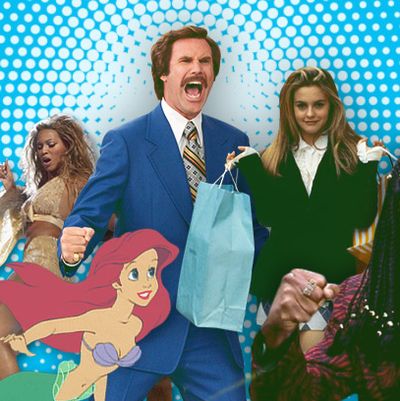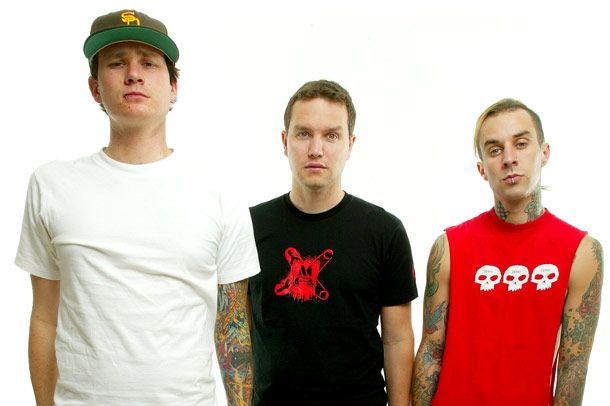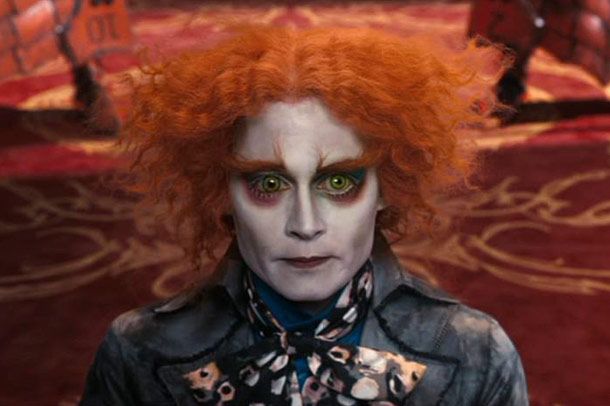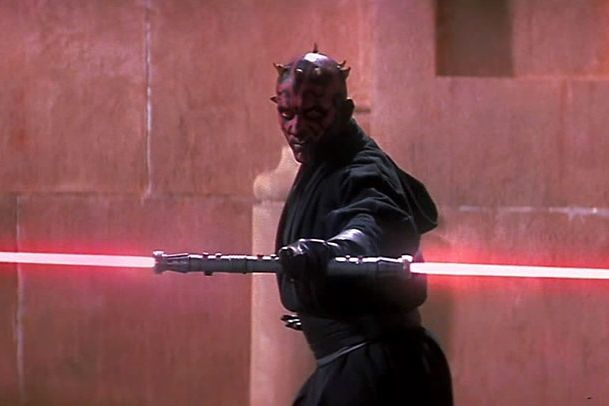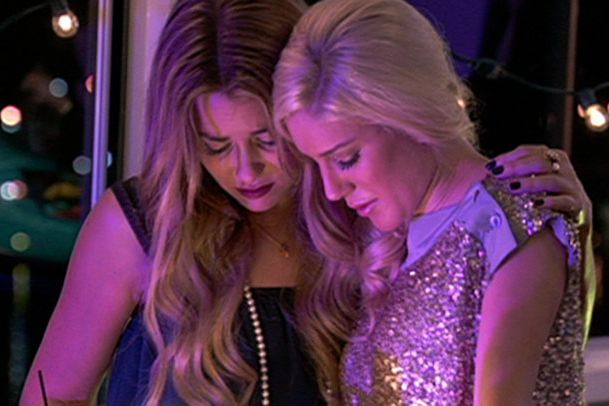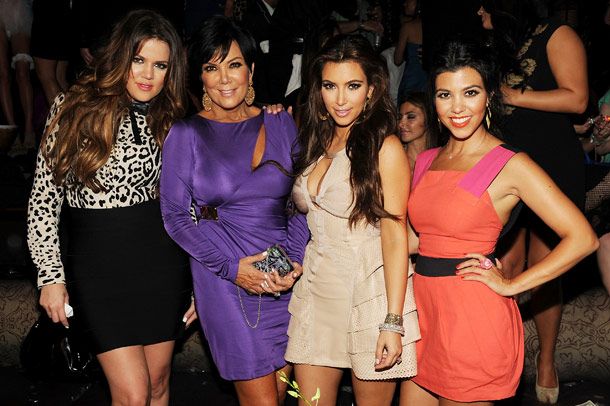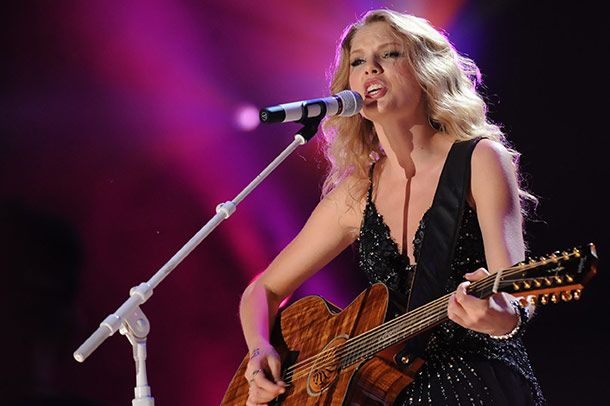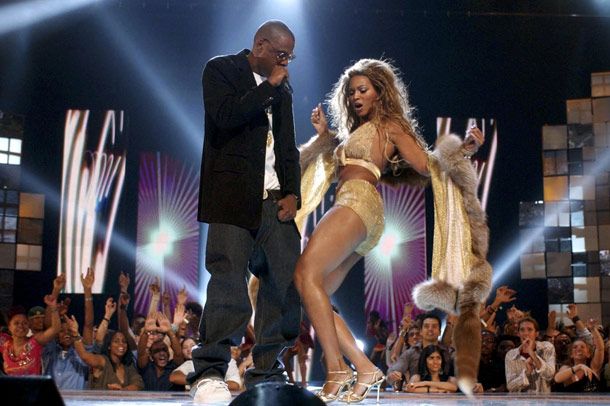At Vulture, all we do every single day is talk about pop culture and try to figure out ways to write an appropriate mix of smart and funny things for you to read and enjoy. We do this because pop culture is fun, it’s important, and it’s everywhere. It’s also something that binds people together. There’s a collection of shared references and markers and shorthand that serves as a secondary language, especially for millennials, which many of us on staff are. So we decided to make an effort at calling out the 100 TV shows, quotes, books, albums, songs, and celebrities that resonate most with millennials. This is not a list of the best pop culture of the past several decades; it’s something else altogether. We know you’ll have lots to say, so please do so. If you’d like to read a longer explanation of why we chose what we chose and see the full list of 100, click here.
“Am I being punk’d?” is our “Am I on candid camera?” The phrase has lasted far longer than the show itself. Premiering in 2003, the show was the start of our seemingly unquenchable thirst for Schadenfreude at the expense of celebrities — best epitomized by the joy of watching Justin Timberlake cry after he was tricked into believing his house was being taken away from him.
Photo: Jeff Kravitz
It doesn’t matter that he’s achieved millennial leading man status in indie movies of the darkest kind — committing violent crimes in Drive, Only God Forgives, The Place Beyond the Pines; dealing with heroin addiction in Half Nelson; and fucking a sex doll in Lars and the Real Girl. Ryan Gosling will always be known for “Hey Girl,” the breezily captioned Internet phenomenon. What started as a simple image macro on
the Tumblr “Fuck Yeah! Ryan Gosling” soon became practically the actor’s entire identity after Gosling happily read some captions aloud for MTV. And why not? There’s nothing wrong with being known as Hollywood’s most affable dude. We love him because he’s dreamy, we love him because he helps people on the street, and we love him because his face goes perfectly with any number of memes. (
Dude hates cereal.)
One day we’ll sit down with our great-grandchildren and they’ll ask us, “Grandma, who was the most famous person when you were young?” “Well … ” we’ll croak, your floating Future Chair coming up from recline, “it was actually a girl, an heiress, named Paris Hilton. Like that hotel on Jupiter we stayed in a few years ago … ” It’s hard to believe even five years later that for quite some time, our most famous celeb was a “celebutante” who became famous after her sex tape leaked. It’s a path to fame that did not exist before our lifetime, but has since been imitated by Kim Kardashian, Teen Mom Farrah Abraham, and others.
Photo: Kevin Winter/2004 Getty Images
If this were solely a list of the “most terrifying things experienced by American children,” the Scary Stories to Tell in the Dark series would take the top spot. The first entry in this three-part children’s book series was published in 1981, and it paired short versions of well-trod campfire stories and urban legends with shit-your-pants illustrations like the one above. No child of the eighties or nineties who has seen the surreal black-and-white sketches of artist Stephen Gammell has ever forgotten them. In 2011, they were replaced by less nightmarish ones —helicopter parenting at its finest.
In 1997, we met Matt Damon and Ben Affleck. And we liked dem apples. Then Ben Affleck spent a decade in the celebrity wilderness while Matt Damon disappeared deeper into movies and slowly became our cinematic Everyman. Between 2001 and 2007, he was in three Ocean’s movies and three Bourne movies — thereby proving he could play both the little brother character and someone who could kill you with a rolled-up magazine and a toaster. It’s the type of range that Tom Hanks in his prime never could have pulled off.
We are a generation of commenters. So, yes, we know we “missed” whatever you think we “missed.” Go ahead and tell us.
No pop band was ever more disgusting; no punk band was ever more innocent. Blink turned immaturity into an art form, cracking wise about blow jobs one second and anxiously daydreaming about holding hands the next: perfect for us teenage boys who wanted to make “your mom” jokes while assuring ourselves that we were secretly nice guys.
Photo: Nigel Crane
Are you a Stacey or a Dawn? A Kristy or a Mary Ann? Before Sex and the City, the young girls of America sorted themselves into Baby-sitters Club members — the bossy one, the free spirit, the one with diabetes, the reject (sorry, Mallories). Baby-sitters Club taught us about business! And child safety! And never-ending book series, of which there would be many more to come.
In the pre-Napster nineties, if we wanted to own our favorite radio jam, we had two options: Fork over $20 for a CD with maybe two good songs on it, or wait a few weeks for its inevitable appearance on a Now That’s What I Call Music! compilation. The series has hung on through piracy and the invention of the iTunes store, in the process becoming an accidental pop time capsule. Hey, remember Chingy?
There’s something perfect about the title of this 1999 book — self-effacing sadness layered over with a bit of optimism — and the book itself. A slim coming-of-age novel so perfectly pitched that when it came time to make the movie, author Stephen Chbosky opted to make it himself rather than have someone else inject even one false note. Unlike most non-genre teen stories, it’s written from the perspective of a young man, there’s a universal feel to the angst and loneliness that is woven throughout. We felt it like our parents felt Catcher in the Rye.
We have to double down on the headline of
a piece written by Vulture’s Kyle Buchanan — young Johnny Depp would hate old Johnny Depp. More precisely, the actor Johnny Depp would hate the cartoon Johnny Depp. Today one of the world’s biggest movie stars, Depp became famous before we were really paying attention — on TV’s 21 Jump Street and in the Tim Burton film Edward Scissorhands. In the late nineties, he starred in Fear and Loathing in Las Vegas, a movie that approximated what it was like to be on drugs before many of us had the opportunity to really try it for ourselves. Half a decade later, he dressed up like a pirate and we haven’t seen the real Johnny Depp since. Jack Sparrow/Willy Wonka/the Mad Hatter is who we know. And because of that, we really don’t know him at all.
These two raunch-masters arrived on the scene at just about the same time — Chelsea Handler in 2005 with her first book My Horizontal Life: A Collection of One-Night Stands and Tucker Max in 2006 with I Hope They Serve Beer in Hell. Both made their mark by dishing about their sex lives, and generally being offensive and “real.” The New York Times validated Max by essentially dubbing him the inventor of a genre called “fratire.” Television validated Handler by giving her a show on E! And both showed us that being disgusting was as valid a path to success as anything else these days.
Meesa don’t think the Star Wars prequels are any goodsa. Tolerable at best. But they represent our attempts to reappropriate objects of nostalgia — and how those attempts sometimes go wrong. It’s a lesson that seems more and more relevant every year, given the proliferation of prequels and reboots. The Phantom Menace especially is now synonymous with sucking the fun out of something (call it the “midi-chlorians syndrome”). We’ve heard stories that the generation below ours may already prefer these over the original trilogy, which is bonkers. Thankfully, instead of destroying the franchise, the new movies just enforced what we all already knew: Original Star Wars is the best.
HSM and its two sequels are ultrawholesome, but the movies also straddle the line of being for kids and not being just for kids. As the franchise’s stars Zac Efron and Vanessa Hudgens grew up, watching them sing G-rated love ballads was both entertaining in its own right (those songs are hella catchy) and interesting as a cultural specimen of megacelebrities doing a super-cornball Disney movie. Yeah, HSM uses teen tropes (she’s the Smart One, he’s the Jock), but it also acknowledges how limiting and scary those rigid roles can be — and it acknowledges that in song. “Stick to the Status Quo” is the poppiest anthem about adolescent social self-policing that ever was. HSM is among the most successful Disney Channel original movies ever, the one you’ve heard of even if you’ve never heard of any of the others. You can’t escape High School Musical.
As The Little Mermaid and the other Disney movies of the nineties were to early millennials, Pixar movies were to latter ones. Films like Finding Nemo and Monsters Inc. are the new animated classics that we will put on to occupy our kids’ time. The first Pixar film, Toy Story, was also the first full-length computer-generated movie, a sign that pixels could approach art and a harbinger of a computer-generated cinema that has come to rule our multiplexes.
In February 2004, an entire generation saw its first naked breast. Wait, no. In February 2004, teenagers across America, many of which already had access to the smutty Internet, saw their first naked breast. Nope, nope. Hold up. In February 2004, maybe some kids watching the Super Bowl alongside their parents saw a one-second glimpse of a naked breast. Maybe? Is that why everyone cared? This might be the moment when we realized that sometimes older people just like to complain about nothing.
Photo: Donald Miralle/2004 Getty Images
The term catfish,
according to Urban Dictionary, means: “ … someone who pretends to be someone they’re not using Facebook or other social media to create false identities, particularly to pursue deceptive online romances.” We can thank Nev Schulman for that one, as it originates from his 2010 documentary of the same name and refers to a story about seafood suppliers keeping cod perky in the shipping process by adding evil catfish to their tanks so they stayed alert and active. That story is completely irrelevant, but the term itself is now well-integrated into popular vernacular. The TV show of the same name is one of the most discussed every week on social media. It’s perfect timing for a generation for which online dating is practically expected and fibbing to find love is just part of the game.
Next time you’re tempted to mock Gwyneth Paltrow for name-dropping Jay Z or Vegenaise, take a moment to remember that she brought you Margot Tenenbaum — the fur-wearing, Sweet Aftons–smoking, half-fingered member of the Tenenbaum family — and then show some respect. Along with co-stars Anjelica Huston, Gene Hackman, Ben Stiller, and Luke and Owen Wilson, Paltrow rounded out one of the most wonderfully weird, hipster-ready movie families of all time. That it arrived mostly from the mind of co-writer Wes Anderson is no surprise — he understands what it’s like to be forever slightly stuck in adolescence, as we are possibly doomed to be. And he understands it’s impossible to escape our hang-ups and that the world is so overwhelming sometimes that we need to put it in perfectly framed order. He understands.
By the time this pair of participatory music video games rolled around in the late aughts, consoles like the Xbox and Playstation were an essential part of many American households and music was something that was largely consumed on portable devices or computers while performing other tasks — walking, running, working, studying, driving. Guitar Hero and Rock Band merged the two into one communal act. Though we’ll likely look back on them a decade from now as nothing more than a fleeting fad, they were the Twister of our day, the ultimate tech-age party game.
Lauren Conrad started out as the perfectly eyelinered high schooler on Laguna Beach and then seamlessly segued into being the perfectly eyelinered college student and then entrepreneur of The Hills. But despite her ostensible personal glamour, Conrad had a vulnerable, tragic element to her. She had terrible taste in friends, crummy taste in boyfriends, and a self-sabotage streak a mile wide. “You’ll always be known as the girl who didn’t go to Paris,” Conrad’s boss warned her, after she passed up a business trip to stay in L.A. with her boyfriend. That one line is worth ten Lean Ins, so powerfully does it resonate with the young women (and more than a few young men) who absorbed its message: Do not sacrifice professional development to fart around with your doofy boyfriend. It’s a lesson the now megamogul Conrad appears to have learned, and one she helped a bunch of us learn by watching.
The belief in a secret cabal of powerful elites running the world is not close to being a new thing. But the pernicious conspiracy theories that identify top pop and hip-hop stars of being part of The Illuminati (a sort of New World Order that some people say crosses over with the Freemasons) is pretty recent. Beyonce, Kesha, Kanye West, Eminem, Rihanna, Lady Gaga, Madonna – all have been accused at some point of pushing Illuminati beliefs into mainstream society through devious means like thinly veiled song lyrics or occult iconography in music videos. (Horns and goat skulls, people. It’s all there if you just look.) The artist most associated with Illuminati connections, though, is Jay-Z, whose signature hand gestures (throw your diamonds in the air, y’all) is believed to resemble the all-seeing eye on the back of the U.S. dollar. Though some hip-hop heads have held onto Illuminati beliefs since the late 90s, the Internet has made it much easier for this all to spread around quickly and widely.
It is an archetype that has existed as long as there have been high schools — the know-it-all, the teacher’s pet, the Goody Two-shoes. But in the 1999 movie Election, we saw that character’s dark side, as imbued with a bit of millennial ambition, intensity, and need to overachieve. As played by Reese Witherspoon, Tracy Flick became one of the great modern movie villains — except that many of us knew that, despite our protestations, we had a flicker of Tracy somewhere deep inside.
Photo: Rights Managed/Photo by: Mary Evans
When we think of the key scenes from Romeo + Juliet, we remember the music that was playing, too: The first time you see Leonardo DiCaprio’s Romeo — that’s Radiohead’s “Talk Show Host.” The first time Romeo and Juliet lay eyes on each other through the fish tank — Des’ree’s “Kissing You.” “Little Star,” “#1 Crush,” “Lovefool” — they were all of a piece with the feelings we were feeling for the first time. (And would feel more intensely a year or so later with Titanic) Hello, Leo; hello, Claire: It’s nice to fall in love with you. Hello, Shakespeare, it’s so nice to finally understand why everyone talks about you so often.
In 2013, a quiet movie about a listless early twentysomething befriending a washed-up actor and singing karaoke to express their shared dissatisfaction sounds like … every other indie movie that never makes it out of Sundance. In 2003, when directed by Sofia Coppola, it was a hipster revelation. (Also, it gave us Scarlett Johannsson.)
Photo: American Zoetrope/(?) Copyright 2003 by 20030829
Quick: Who is Dawson Leery’s favorite director? The fact that you instantly know the answer – Spielberg – is a testament to the show’s legacy: Unlike the teen soaps that came before it (90210, for example), Dawson’s Creek was about thoughtful, pseudo-intellectual teenagers. (The series premiered in 1998.) Dawson, Pacey, Jen, and Joey liked to talk — a lot. About deep things. Using big words. But that doesn’t mean that, between long-winded conversations about friendship, the future, and the meaning of life, the gang didn’t also find time for love triangles. Dawson dated Jen and Joey; Pacey dated Jen and Joey (and his English teacher, Ms. Tamara Jacobs). There was heartbreak; there were tears; there was James Van Der Beek’s
cry face. By the end of each episode, you were emotionally exhausted from feeling all the feelings and physically exhausted from yelling “shut up” at your TV. It was quite a ride. (Also, Team Pacey.)
Photo: ?Columbia Tristar/Courtesy Everett Collection
We watched him become the biggest actor in the world, his path more dogged and well plotted out than almost any star of our time. First he was a light and genial rapper, then he starred on a seminal Millennial sitcom before getting the juice in a chain of blockbuster movies – the Bad Boys series, Independence Day, the Men in Black movies, Enemy of the State, Hancock. We’ve also seen him disappear from the screen for years at a time and focus on making his children his next blockbuster project. Hollywood has changed, and traditional fame is on the wane – Will Smith may end up being our last movie star.
Photo: WILSON WEBB/? 2011 Columbia Pictures Industries, Inc. All rights reserved.
Despite Sandy Cohen’s bagel etiquette, Marissa Cooper’s pool furniture freakout and Summer Roberts’ Wonder Woman costume, nothing is more important than The OC soundtracks. The show that gave us California envy also gave us the likes of Spoon, The Thrills, Interpol, The Killers, Beulah, Death Cab For Cutie, The Eels, Of Montreal, and LCD Soundsystem – which had enjoyed by indie-lovers before, but now truly became a part of the Millennial musical experience.
Showbiz families used to have talent — the Hustons, the Barrymores, the Coppolas. Today, they have ruthless business acumen. Take the Kardashians (please!): Bruce, Kris, Kim (and Kanye and North), Khloe (and Lamar), Kourtney (and Scott, Mason, and Penelope), Rob, Kendall, Kylie, and, if we’re pulling teeth, Brody Jenner. That’s enough people to fill the table at the Last Supper. It’s also enough to produce four reality shows (five if you count The Kings of Malibu — and you should), myriad lucrative product deals, and hundreds of tabloid pages. And all because Kim followed in the steps of Paris Hilton and leaked a sex tape. The private is public forevermore.
Photo: Denise Truscello/2011 Denise Truscello
Born just before the generation officially began, James Franco is nonetheless millennial incarnate. He is overly educated (see his numerous college associations); has artistic ADD (jumping from one project to the next like a college freshman on the make); a sense of “I can do anything” self-esteem that befits the “everyone gets a trophy” philosophy; a personality that perfectly bridges Generation X irony with Generation Y sincerity; and an ability to mix pursuits both high and low, from superhero movies like Spider-Man to artsy projects like Spring Breakers. Also, half the time he just seems like he doesn’t give a damn.
Photo: Evan Agostini/2007 Getty Images
Fallon rose to prominence on Saturday Night Live around the turn of the century, right when many of us were really getting into the show. However, no one could ever have expected him to become the next Johnny Carson. Yet that’s what he’s poised to become: He will take over The Tonight Show next year before he even turns 40. His brand of nice, fun-focused, not overly intellectualized silliness that is consistently able to go viral is helping to define our current comic sensibility, like Conan O’Brien and David Letterman did in decades past.
Photo: Jamie McCarthy/2013 Getty Images
What is a Union Jack? Is it (a) a flag (b) a snack, we think? or (c) the tiny glittery thing wrapped around Ginger Spice’s body for the second half of the nineties? Your answer will vary, depending on whether you can properly define “zig-a-zig-ah” and cared about girl bands when they were still happening. But remember: The Spice Girls not only gave us post-empire Anglophilia, they also invented Girl Power. (Well, not invented it, but gave it a name, at least.)
Photo: Photoshot/2012 Photoshot
This book trilogy took YA mainstream, in the sense that everyone — even adults — consumed it and had an opinion about it. And what Twilight did for vampires, Hunger Games did for dystopian fiction, strong teen heroines, and Jennifer Lawrence. Imagine a world without Jennifer Lawrence! (It’s a terrible one, okay?)
Face it: There was no better place to make out with someone in junior high than the lawn of a Dave Matthews concert. It’s embarrassing now; it was barely cool then, and only because we had to steal Under the Table And Dreaming from our older brothers. But DMB was the mainstream jam band of choice, and their songs are still a crucial bro litmus test. (Example: Does he know all the words to “Ants Marching”? He is a bro.)
Photo: Lyle A. Waisman/2011 Lyle A. Waisman
In 1999, Morpheus offered Neo a choice. Choose the blue pill and return to the blind ignorance of present-day Earth. Choose the red and see the world as it truly is … and then kick some ass. This blend of armchair philosophy and big tent thrills set a precedent for many action movies that followed.
The patient zero of two now omnipresent trends: the found-footage movie and viral marketing. It’s no shocker that amateurs like to film themselves, and the arrival in the aughts of camera-equipped smartphones (and Flip cameras) allowed anyone to take the visual style of this 1999 hit low-budget horror movie and apply it to homemade sex tapes, on the fly short films, and easily sharable cat videos. Filmmakers continue to ape the style in numerous horror films. And the Blair Witch’s advertising campaign, which led many people to believe that three student filmmakers had actually disappeared while hunting a witch, is the progenitor of everything from the Old Spice guy to Jimmy Kimmel’s “twerking girl on fire” hoax. Also, it has one of the scariest final shots ever.
“Remember when MTV played actual music videos?” Not really: For many of us, MTV only ever played one hour of music a day, from a Times Square studio surrounded by screaming teens. TRL was our radio station, celebrity gaffe generator, and No. 1 source of boy-band intel from the years 1998 through 2003. It was like YouTube hosted by Carson Daly — if YouTube only had the same four ‘NSYNC videos and that clip of Mariah Carey handing out ice cream. We watched this every day.
Photo: Frank Micelotta
We’ll put our concessions up front: Yes, karaoke is not a new phenomenon, and, yes, singers will often choose songs from way, way back in the eighties. Millennials don’t get credit for karaoke, but we’re happy to take credit for its popularity. We’re all looking for our fifteen minutes of fame, be it on YouTube, Instagram, or Vine. Technology has made it that much easier, and we’re taught: “Anyone can be famous! Just look at American Idol, The X Factor, or America’s Got Talent.” Screw busking — we’re headed to a karaoke bar, where we can express ourselves and people rarely boo. It’s social, it involves drinking, and shame is placed on hold for a few hours.
Back to Black is already a classic. Millennials know this — we are old enough to remember Amy Winehouse when she was new and immensely talented. But we were also there for the first hints of trouble, the interventions, and the increasingly scary paparazzi photos; we were devastated, but not totally surprised, when she passed away. She was not our first celebrity death, but she was maybe the first of our peers.
Photo: Jim Dyson/2008 Getty Images
“Stop trying to make ‘fetch’ happen.” “You go, Glenn Coco.” “Too gay to function.” “She made out with a hot dog.” “Damn, Africa, what happened?” “On Wednesdays, we wear pink.” “Is butter a carb?” “You can’t sit with us!” “Beware of plastics.” If any of these phrases mean anything to you, you are a Mean Girl. Or you’ve seen Mean Girls more than once. It’s important because we quote it and we quote it because it’s important. It’s arguably the cinematic peak of Millennial Canon superstar Lindsay Lohan and the beginning of our collective love affair with Tina Fey.
Take a good look, folks. Idol is America’s last hit TV show. There will be other well-liked shows, better respected ones, and others that crown winners who go on to be pop icons for years to come. But Idol is the last gasp of network supremacy, the last show to regularly pull in 30 million viewers. As audiences fracture into niche groups, and as cable networks pop up to meet every possible marketing demographic, remember this: American Idol was the last thing we all agreed on.
Photo: R Mickshaw/American Idol 2008/2008 Fox
What does a Neptunes song sound like? Like the radio. A production duo who moved seamlessly between hip-hop, R&B, and pop, Pharrell Williams and Chad Hugo were responsible for the sound of the mainstream in the exact moment before the idea of the mainstream exploded. Their trademark layered synths and innovative percussion made them bigger than many of the artists they made hits for, and if you don’t believe us, ask yourself: How’s Ray J’s career going these days?
Photo: Jo Hale/2004 Getty Images
The American Office premiered in 2005, just as the first millennials were entering the workforce. Beyond justifying a wave of cross-Atlantic TV remakes, it went on to be a defining workplace comedy, featured the greatest sitcom courtship since Sam and Diane, and typified the fourth-wall-breaking aesthetic that has been omnipresent for much of this century. Above all, it was the most broadly popular show of the aughts’ sitcom golden age.
Photo: JUSTIN LUBIN
Ah-ah-ahhhh, ah-ah ah-ah-ahhhh — oh, hey, there! We were just practicing our vocal-cord warm-ups, as any mention of The Little Mermaid, Aladdin, Beauty and the Beast, and/or The Lion King turns us into a Disney jukebox. Care to join us in a sing-along of “A Whole New World”? These are the movies that put Disney animation back on top. These are the movies that made us love anthropomorphized animals and objects. These are the movies we love with no reservations.
When we talk about Taylor Swift, we talk about her exes. (Also, occasionally, about her surprise face, and her awards-show dancing, and the millions and millions of dollars she has made. But mostly the exes.) Why would anyone ever date her if she’s just going to write about him? the olds ask. Why is she always whining about her boyfriends in public? Because she is a millennial, and that is what we do: talk about our feelings in public. Taylor Swift is just better at it than most.
Photo: Rick Diamond/2009 Getty Images
There is no “I choose me” for the under-30 set: You’re either Team Edward or Team Jacob. Twilight gave a generation its defining love triangle (between a stalker and a werewolf); took vampires mainstream (and sparkly); popularized fan group names (see: Twi-hards); and made YA normal for AAs (Adult Adults). It also gave us something to be embarrassed about, which is just as important.
Photo: Kimberley French/? 2009 Summit Entertainment. All Rights Reserved.
The oldest of us can remember going to Blockbuster Video and being confronted with dozens of copies of identical new releases taking up entire walls like a Warhol painting. Then Netflix arrived in the late 90s and we could get DVDs in the mail. Amazing. We built up our queues and started to catch up on new movies and TV shows like 24. (And all of us had that one DVD we kept on top of the TV for nine months, under the assumption we’d watch it one day.) Then streaming launched, binge-watching became a fact of life, and it’s all led to where we are now, with services like Hulu, Amazon Prime, Crackle, HBO Go, Vudu, Warner Archive, joining the streaming fold. Netflix has changed our viewing habits forever; we expect to be able to see most things immediately and without hesitation.
Or, put another way, Peak Britney. Before the head-shaving, and the umbrella incident, and all the sad things that brought us to present-day Zombie Britney, she was the pioneering post-Disney pop star. The VMAs snake dance was Britney as we would choose to remember her: happy, talented, and with a terrifying wild animal wrapped around her neck. Or perhaps she was the terrifying and wild animal the snake was wrapped around.
Photo: Frank Micelotta/2003 Getty Images
Apatow spent the nineties as a successful yet unremarkable comedy writer. Things changed around the turn of the century, when Apatow started to do what he is truly best at: facilitating the comic genius of others. Sure, he’s made some very good movies in his own right (especially The 40-Year-Old Virgin), but they are rightfully overshadowed by what he’s produced: Anchorman, Freaks and Geeks, Superbad, Bridesmaids, Girls, etc. There’s a piece of him in each project: his mixture of grounded, emotionally honest, and broad set-piece-focused comedy.
Photo: Photo Credit: Suzanne Hanover./Copyright: ? 2005 Universal Studios. ALL RIGHTS RESERVED.
Today, the fact that many blockbusters are nearly three hours long is enraging. But back in 1997, when we first saw this lengthy love story, we were in such awe of it — the special effects,
Leonardo DiCaprio’s face, James Cameron’s attention to detail (the plates!) — that we wanted it to go on forever. In lieu of that, we returned to the theater to see it again. And again. And again. We probably spent 22-plus hours of our life watching it on the big screen in that year. We helped it earn eleven Oscars and eventually $2 billion worldwide. To this day, we can’t travel via boat without hearing at least one idiot call himself the “king of the world.” And even though we’ve come to terms with the fact that Rose let Frozen Jack go — while saying she’d never let go — we will never, ever accept Jack’s halfhearted attempt at climbing onto the door.
They both could have fit.
Lindsay Lohan is one of our own. She spent her childhood years entertaining our childhood years (The Parent Trap, Freaky Friday), her teenage years making us feel better about our teenage years (Mean Girls, Just My Luck) and her adult years making us feel better that we hadn’t screwed up our adult years (I Know Who Killed Me, Liz & Dick, rehab.) like she had. You see where I’m going with this. Lindsay Lohan is a Millennial, just like us, and we can’t help but write her trials and tribulations (of which, there seem to be so many) into our own history books. Where were you when the music video for “Confessions of a Broken Heart (Daughter to Father)” appeared? When TMZ live-streamed Lilo’s first court visit? When she did Playboy? Why do we keep giving her new chances? Because we’ve gone through this together.
Gossip Girl hit on every possible front: Fashion-wise, the show singlehandedly revived headbands and colored tights and invented a luxe-preppy aesthetic that may never leave us. Romance-wise, between Chuck and Blair, Dan and Serena, and Rufus and Lily, there was a little something for everyone. Tech-wise, GG was the first show to fully embrace the idea of push notifications and constant connectivity. And tabloid-wise, the cast was just as interesting (and sometimes more so) offscreen as on. You know you love me.
Photo: Copyright ? ?CW Network/Courtesy Everett Collection / Everett Collection
The best and worst thing to come out of Ben Affleck and Jennifer Lopez’s relationship was not Gigli or Jersey Girl — it was Bennifer. The year was 2005 and the celebrity couple portmanteau was born. Since then, we’ve welcomed Brangelina, TomKat (no longer with us), Kimye, Robsten (over!), Speidi (still together?), and others into our cultural lexicon. This is just what we say now, these Twitter-size namelets. But not all such mash-ups work. Take, for example, Jennifer Aniston and Justin Thoreaux’s Jethraux. Nice try, America, but mono-monikers, like love itself, can’t be forced.
Photo: Jason Merritt/2012 Getty Images
For at least a decade and a half, our blockbusters have been superhero movies. In 2005, Christopher Nolan became our dark knight. With that year’s Batman Begins, he moved comic book movies away from the light fare exemplified by the Spider-Man and X-Men films into darker, grittier, more “realistic” territory. In the 2008 sequel, he went bigger, more epic, more psychological, casting one of our brightest young stars in one of his best and final roles. Vulture has already named The Dark Knight as
the best action movie of the past quarter century. But even outside of that achievement, in non-Bat films like the mind-twisting blockbuster Inception, Nolan remains Nolan, his style and tone immediately recognizable. He is our pop auteur.
Photo: TM & ? DC Comics. ? 2008 Warner Bros. Entertainment Inc. All Rights Reserved.
These eight movies make up the highest-grossing film franchise of all time. But it’s really J. K. Rowling’s series that changed things forever. A global phenomenon the likes of which popular literature had never seen, each subsequent book resulted in larger midnight release parties, gripped more and more young readers, and helped hoist fantasy up out of the genre ghetto. There are very few millennials in the English-speaking world (and beyond) that have not had some encounter with The Boy Who Lived.
Photo: Jaap Buitendijk/(C) 2011 WARNER BROS. ENTERTAINMENT INC. HARRY POTTER PUBLISHING RIGHTS (C) J.K.R. HARRY POTTER CHARACTERS, NAMES AND RELATED INDICIA ARE TRADEMARKS OF AND (C) WARNER BROS. ENT. ?ALL RIGHTS RESERVED
Here’s a handy tip to turn stilted small talk into a joyous conversation: Ask someone what their favorite Onion headline is. (“King Latifah Returns for Wife,” thanks for asking.) Usually that conversation will wind up including how people “discovered” The Onion back in the day, the first time they laughed so hard they cried, and that episode of “This American Life” where they explain how each issue of The Onion is assembled. For something completely mainstream, The Onion still feels secret and subversive, like sitting next to the world’s greatest class clown. Jon Stewart is the highest paid late-night host; Stephen Colbert testifies in character in front of Congress. But somehow The Onion is still the most important satire in America today.
Kanye was always an asshole, but it took a VMAs stunt to make everyone finally realize it. It didn’t matter that he had famously gone off script on live TV before (2005’s “George Bush doesn’t care about black people), and it didn’t matter that he was right (about Beyoncé’s video; see “Single Ladies”), and it didn’t matter that he was, and remains, one of the most talented musicians alive. “I’mma Let You Finish” is when Kanye became a jackass (Obama’s words) and Taylor Swift became a victim, two personas they have played to unimaginable wealth and fame in the years since. It (along with Amber Rose) gave us My Beautiful Dark Twisted Fantasy; it gave us tortured, Diva Kanye. He’s been trying to top it ever since.
Photo: Jeff Kravitz/2009 Jeff Kravitz
Go ahead, try to pick a favorite Tina Fey–Amy Poehler pop culture moment. “Mom Jeans”? Something from their days co-anchoring “Weekend Update,” perhaps reminding us all that bitches get stuff done? A scene from the underappreciated Baby Mama? How about the sketch where they played Sarah Palin and Hillary Clinton and it was the most resonant commentary on politics and feminism in years? Or when they killed it hosting the Golden Globes? Throw in their individual achievements on 30 Rock and Parks and Rec (and Fey’s instantly essential book Bossypants) and these BFFs have pretty much defined comedy for the last decade. They’ve also served as something approaching pop-culture role models — smart, successful, and self-aware. Lucky us.
Photo: Handout/2013 NBCUniversal
Clueless taught us about popular girls, and it taught us how to make fun of popular girls. It taught us about “misogynistic undertones;” negotiation tactics; how to use the word “sporadically;” Paul Rudd. We learned how to get around Los Angeles (everywhere takes twenty minutes); we learned that Radiohead and flannels were kind of poser-y even in 1995. Everything that a twentysomething woman needs to know, she got from watching Clueless when she was slightly too young to get the jokes. (Why do you think uptalk is so popular?)
Once upon a time, Jay-Z was a virtuoso rapper, and Beyoncé was one third of a nineties R&B girl group. We’ve heard the nostalgic yarns about Reasonable Doubt; we even remember a few Destiny’s Child singles. But we think of Beyoncé and Jay-Z as a unit: our finest cultural ambassadors, the ultimate power couple, and the peak of modern celebrity. Together, they gave us “Crazy In Love” (the most important Song of Summer) and Blue Ivy (the most important child.) Together, they continue to teach us about happy marriages. (The millennial era will end the moment – God forbid – they ever split up.) It is impossible to be more important than Bey and Jay, unless you are their friend, the President of the United States, and even then you might get upstaged at an Inauguration. The nicknames aren’t coincidence: they’re called Hov and Queen Bey because they’re royalty. The American Dream. What more can we say?
Photo: Frank Micelotta/2003 Getty Images
